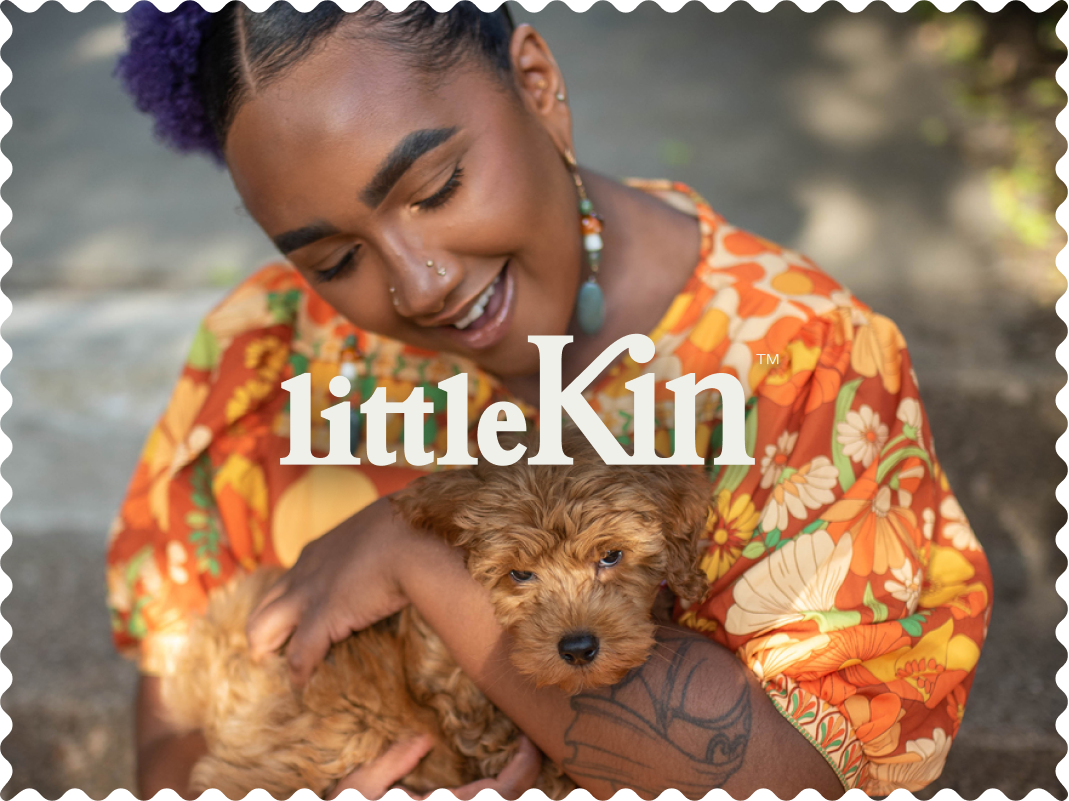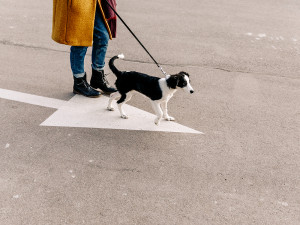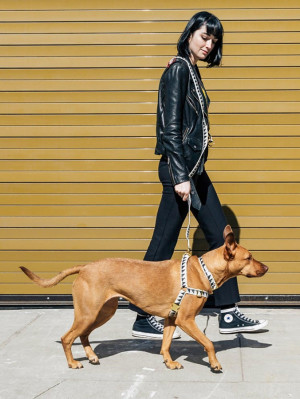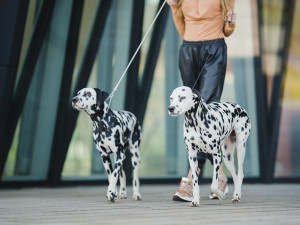Harness vs. Collar: Which Is Better for Your Dog?
Consider these pros and cons.
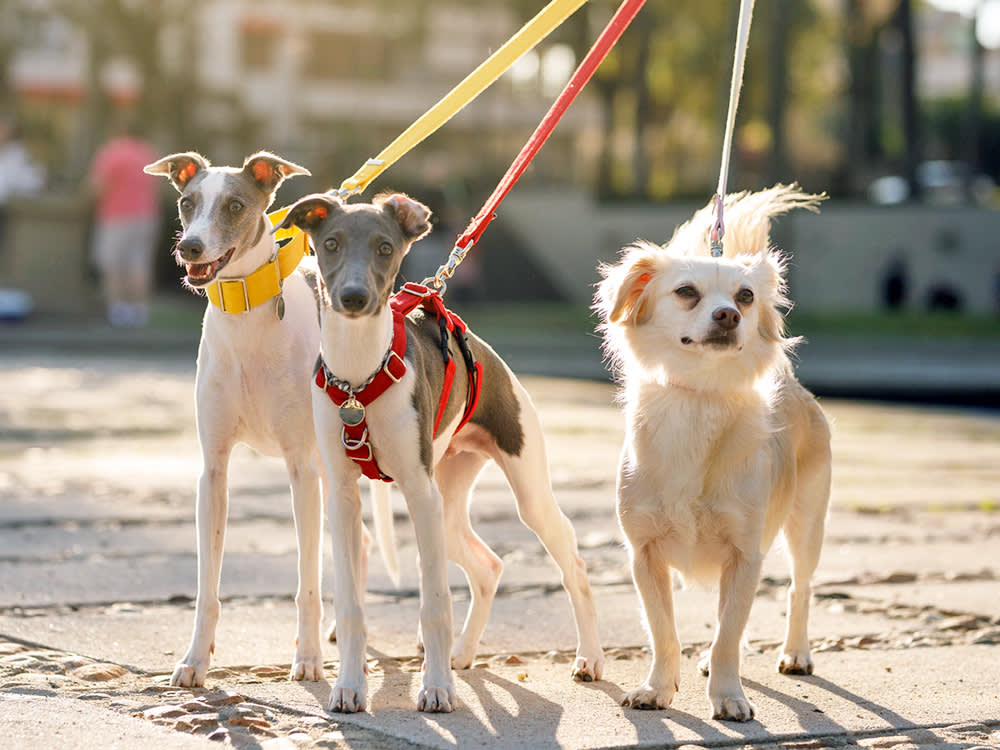
Share Article
In This Article:
What Are Dog Collars? What Are Dog Harnesses? How to Determine If a Collar or Harness Is Best for Your Dog Which Dogs Should Use a Collar? Which Dogs Should Use a Harness? Does One Help With Training More Than the Other?
When getting a new dog, one of the first items you will need is a collar or harness. But picking out these accessories is not as simple as you would think. They can be a fashion statement but, most importantly, they are a useful safety tool. In most areas, it is required by law that your dog is leashed. To do that safely, you must use a harness or collar attached to a leash.
Making the correct choice means you need to think about: the purpose you are using it for (e.g., city walks, hiking, training walks), the size of your dog, how strong a puller they are, and more.

What are dog collars?
Collars get secured around your dog’s neck as a way to keep them safe. They come in a variety of colors, fabrics, and designs. They give you a way to allow your pup a little style while keeping them safe if they are ever lost. The most important reason for your dog to wear a collar is so that they can be identified at all times in case they get lost.
Pros
You can hang your dog’s identification on a collar as well as hook the leash to it. Collars are simple to put on and take off. They can be functional as well as stylish.
Cons
Collars can be dangerous if left on a dog when home alone; they can get caught on something, or get caught while two dogs are playing, and accidentally injure or suffocate a dog. Collars can also be a hazard to a dog’s neck and trachea when not used properly or if your dog is a strong puller.
Different types of collars
There are many types of collars. A buckle collar and martingale collar are the two we recommend using consistently with your dog.
What are each of these collars best used for?
A buckle collar is best used to make sure your dog always has their tags on and can be identified if lost. This type of collar can also be used when walking for an easy-going dog who is not a strong puller.
A martingale collar is a great tool for a dog who tries to slip through their collar. Martingale collars, when sized properly and used correctly, are an asset to you and your dog. A martingale cinches tighter as your dog pulls, preventing your dog from accidentally slipping their collar. When using a martingale, it should not get so tight around the dog’s neck that it may choke them, and you should not use it for any sort of corrections.
A martingale is also a great collar to use when you are training your pup. Paired with positive reinforcement and treats, you will have a dog who walks nicely at your side in no time.
What are dog harnesses?
Harnesses were invented many years ago, before dogs were mainly pets; back in the day, they were used to assist humans in everyday jobs. It is said that harnesses were initially invented to provide more comfort for dogs who would be pulling items. Because harnesses were initially invented for pulling, that is exactly what they cause your dog to do.
The way a harness is positioned on a dog’s body drives them to want to pull, triggering a certain feeling, making them propel forward. There are only a handful of specifically designed dog harnesses that do not trigger the pulling sensation in your dog.
Pros
Harnesses take the pressure off your dog’s neck and give them a safer walking experience. Harnesses are a great way to give your dog more freedom. Just like everything, when used properly, harnesses can be a great tool for your dog, especially if you’re taking a nature walk or hike and are encouraging them to explore. In that case, a little pulling is fine.
Cons
Due to the way certain harnesses are made and where the fabric lies on a dog’s body, harnesses may trigger your dog to pull at times when it is not appropriate for them to do so.
Different types of harnesses
There are a variety of different types of harnesses you can buy online. Here are a few of the available choices: back-clip harness, front-clip harness, tactical harness, or soft-fabric harness.
What are each of these harnesses best used for?
A back-clip harness is best for when you are okay with your dog pulling, for a small dog, or for a dog trained to walk on the leash calmly. The back clip tightens the fabric around their sides, which may make them want to pull. The front-clip harness is usually called a no-pull harness.
When the leash is clipped to the front, it discourages pulling behaviors by offsetting the dog center of gravity, making it challenging for them to continue to pull forward. Tactical harnesses are great for dogs that have a job like service dogs, seeing-eye dogs, or emotional-support dogs. Those dogs are typically well-trained and have the skills to walk calmly on a leash. Soft-fabric harnesses are best used with small dogs and puppies.
How to determine if a collar or harness is best for your dog
When deciding if you should use a collar or harness, it is important to take a look at your dog and think about what type of activities you will be doing with them. Is your dog an escape artist? A strong puller? What size is your dog? Will you be hiking? Will they be going for neighborhood walks? Or maybe they’re going a city walk or somewhere where you need to keep your dog close and in control. Does your dog have any behavioral concerns?
Which dogs should use a collar?
A collar should be used on all dogs for ID purposes. Yet, not all dogs should have a collar attached to a leash and used for walking. Collars are best for adult dogs with calm temperaments or dogs who have been trained to walk nicely and not pull on the leash.
Which dogs should use a harness?
Harnesses are great for small dogs, puppies, and dogs who have been trained to heal on a leash. Collars can be extremely hard on the neck health of a dog, especially a small one.
Puppies are still developing, so they should avoid having a leash attached to their collar until they are full-grown. Harnesses can be helpful for older dogs or dogs with medical issues. Also, it is best to use harnesses with dogs who have short noses, like Pugs. Brachycephalic dog breeds (aka flat-faced dog breeds) already struggle with breathing as it is, and putting pressure around their neck via a collar can only make it worse.
Does one help with training more than the other?
Martingale collars and front-clip harnesses are the best for training purposes. They give your dog the necessary input to make training easier for both of you while keeping your dog safe.
Bottom line
Choosing between a collar and a harness, is very dog-specific. Choose your harness or collar based on your dog's needs and what they will be participating in while wearing them. It can be useful to have more than one collar or harness. That way, you have specific ones for designated activities.
References
“Dog Collars and Harnesses | Cummings School of Veterinary Medicine.” Tufts.edu, 22 Nov. 2022, vet.tufts.edu/news-events/news/dog-collars-and-harnessesopens in new tab.

Danielle Vrabel, CPDT-KA
Danielle Vrabel is a dog trainer who earned her CPDT-KA in 2020. Danielle is a proud pet mom of five pets: two dogs, two cats, and a corn snake. Danielle has fostered over ten dogs and fifteen cats and kittens, as well as helped train shelter dogs before they are adopted. Both of Danielle’s dogs are pet therapy dogs, where she also volunteers her time helping evaluate future therapy dogs.
Related articles
![Woman with neck-length black hair wearing all black leather and black converse walking her brown dog on a black and white harness against a yellow tin background]()
The Best Dog Harnesses of 2025
Experts pick the best harnesses for every kind of dog—from flat-faced breeds to tiny teacups to escape artists.
![Woman walking dog back into the house.]()
Does Your Dog Want Their Collar Taken off When They Get Home?
Is this like a bra or more like a necklace type of situation?
![A woman feeding her dog a treat while on a hike.]()
Why Your Dog Needs a Martingale Collar
For starters, it prevents escape, works as a training tool, and is recommended by rescue workers.
![Owner walking two Dalmatians downtown]()
How to Stop a Dog From Pulling on the Leash
Don’t worry: You’re not doomed to be pulled down the street forever.
How to Manage Leash Reactivity in Your Dog
If your pup acts diabolical on walks, you are not alone. Here’s what you can do.
